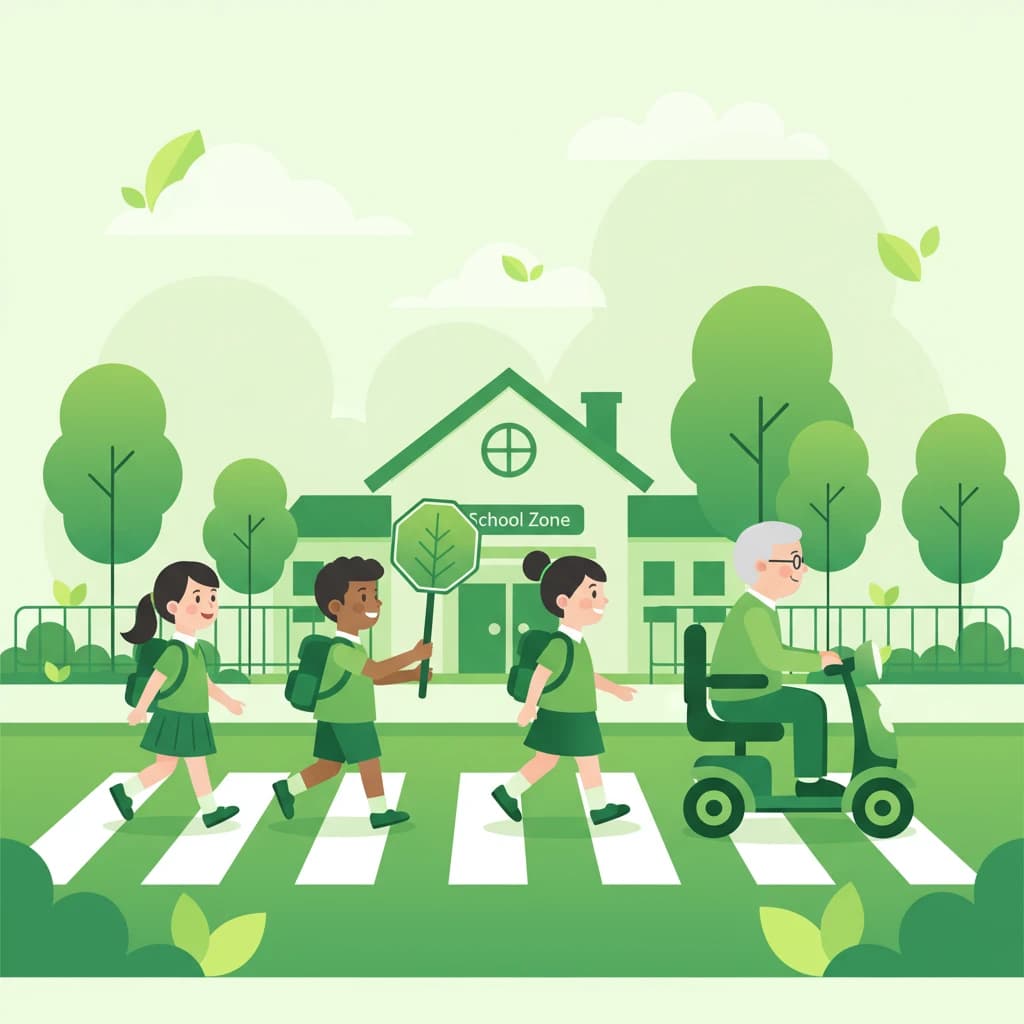This lesson focuses on your responsibility to protect vulnerable road users like children, the elderly, and individuals with disabilities. Understanding their specific needs and potential unpredictability is crucial for safe driving in the Netherlands. It builds upon general right-of-way principles and prepares you for specific scenarios tested in the CBR theory exam.

Lesson content overview
Explore search topics learners often look for when studying Children, Elderly, and Disabled Road Users. These topics reflect common questions about road rules, driving situations, safety guidance, and lesson level theory preparation for learners in the Netherlands.
Find clear answers to common questions learners have about Children, Elderly, and Disabled Road Users. Learn how the lesson is structured, which driving theory objectives it supports, and how it fits into the overall learning path of units and curriculum progression in the Netherlands. These explanations help you understand key concepts, lesson flow, and exam focused study goals.
Children can be impulsive, easily distracted, and may not have fully developed spatial awareness or an understanding of traffic risks. They might suddenly run into the road without looking, especially when playing or chasing a ball. Drivers must anticipate this unpredictability, particularly near schools, playgrounds, and residential areas, and be prepared to brake suddenly.
Elderly individuals may move more slowly than other pedestrians, take longer to cross roads, and might have reduced hearing or vision. It’s essential to be patient, give them ample time and space, and avoid honking or revving your engine, which could startle them. Always ensure they have safely cleared the roadway before proceeding.
Look for visual cues such as a white cane, which indicates a visually impaired person. Guide dogs also signify that a person may have a visual impairment. Individuals using wheelchairs, crutches, or walking frames also require extra space and consideration. These signs mean you should give them extra room and time to navigate traffic safely.
Yes, even if there isn't a specific speed limit sign, drivers should always significantly reduce speed and be extra vigilant near schools and playgrounds. Be prepared for children to enter the road unexpectedly. Often, temporary speed limits (e.g., 30 km/h) are in place during school drop-off and pick-up times, and these must be strictly adhered to.
CBR exam questions often present scenarios where you must demonstrate your understanding of how to interact with vulnerable road users. You'll be tested on anticipating their behaviour, choosing the correct speed, and knowing when to yield or stop to ensure their safety. Correctly answering these questions shows you can apply defensive driving principles.